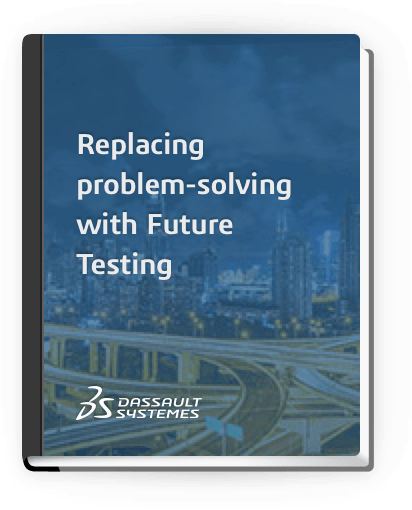“Future Testing” approach
New technology is changing the way Architecture, Engineering and Construction (AEC) companies are solving problems. Reacting quickly to issues and limiting project cost and budget overruns is key to success. But traditional methods of problem-solving will, at best, provide incremental improvement. These legacy methods only limit the growth of current cost, time and waste cushions added to projects.
To change the game, companies need a new approach that lets them drive innovation,increase speed, improve agility, reduce waste, and gain trust with stakeholders. Innovative companies are doing just that, by adopting a new “Future Testing” approach. Future Testing allows all participants in the AEC industry to anticipate issues and opportunities early so they can reduce risk and take advantage of innovative ideas. As a result, they’re slashing wasted time and cost currently deemed “standard” in design and construction.
Future Testing for Architects
Future Testing allows architects to see their concepts come to life in full 3D. It helps drive speed and helps unlock creativity during the creative process. Traditionally, architects develop high-level conceptual models to share their artistic intentions and allow others to take the designs to the next stage. But the speed and automation available through advanced technology such as parametric modeling can allow the creative team to go further. They can develop digital models that incorporate company knowledge and represent the building and the build sequence completely and precisely. The models are complete because designers can use intelligent automation to model the entire building across all trades, allowing all stakeholders to see what it will look like down to the finest details. This way of working allows the architect to get feedback from the beginning. They can build in constructability and knowledge from fabricators and installers into the digital model to anticipate and communicate downstream efficiencies.
Future Testing for Architects – In Action
An example of Future Testing in action for an architecture firm is the development of the Botswana Innovation Hub by SHoP Architects. They designed a unique building with a graceful, morphing shape. The plan called for the fabrication of many parts, with multiple variables and tight tolerances. The SHoP team used the Future Testing technique of developing a complete, precise model of the facade system. Beyond designing a functional, beautiful structure, they focused on constructability. They added information to the model to make fabrication and installation more efficient, for example adding the installation sequence to the design, so it was included on drawings and directly onto the prefabricated parts. The results are impressive. They met the need for a high level of control and the ability to coordinate the fabricator and the construction site that are both thousands of miles away from their design offices in New York, with the materials prefabricated in Cape Town, South Africa.



 Tweet: New technology is changing the way AEC companies are solving problems #3DEXPERIENCE @3DSAEC https://ctt.ec/z1aro+
Tweet: New technology is changing the way AEC companies are solving problems #3DEXPERIENCE @3DSAEC https://ctt.ec/z1aro+